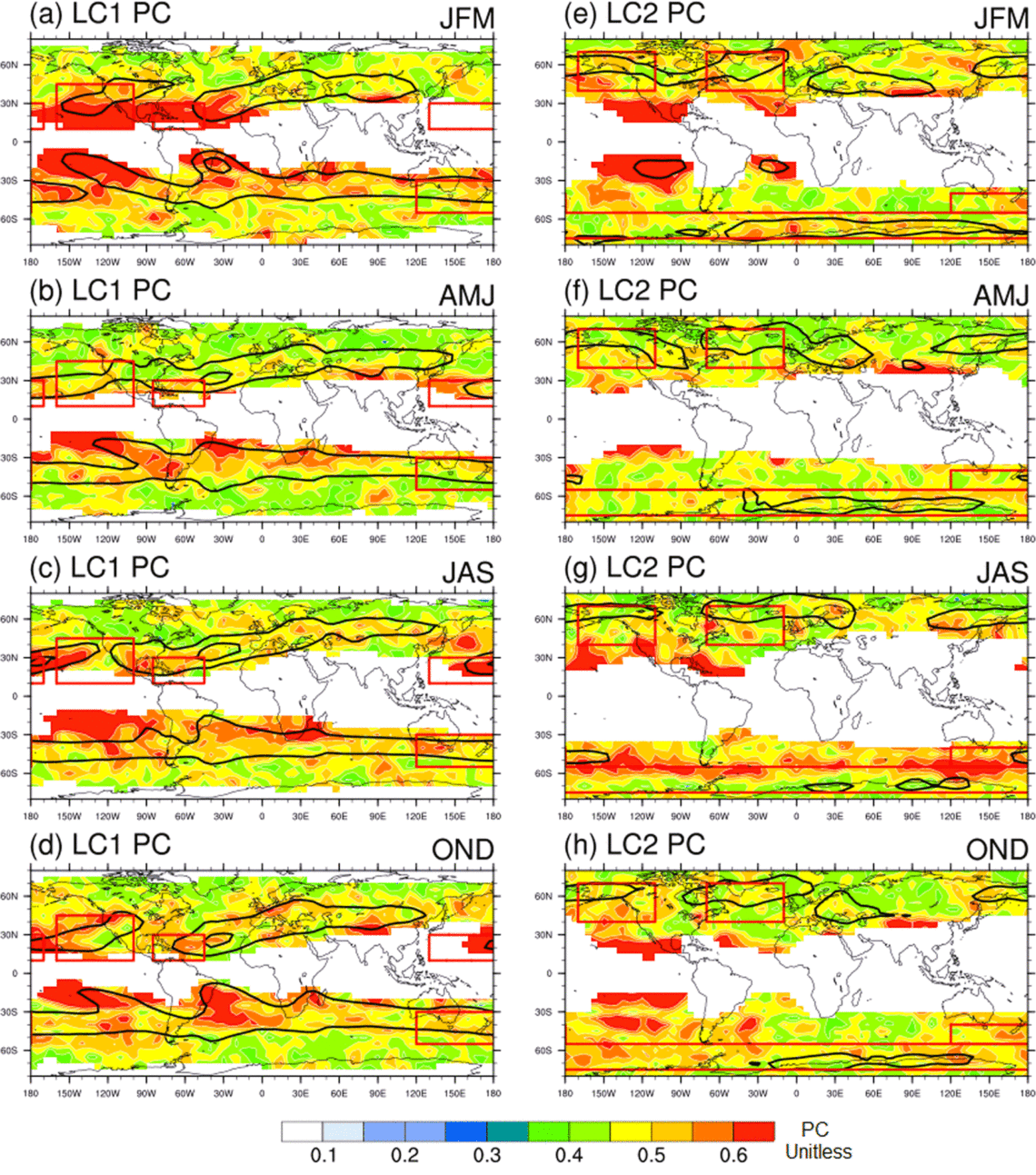December 9th, 2021
Key Findings
- Contrary to popular views, certain aspects of baroclinic wave activity (BWA) are found to be highly predictable on subseasonal-to-seasonal time scales
- Potential predictability of BWA is suggested by an analysis of the signal-to-noise ratio in large-ensemble climate simulations forced by sea surface temperature
- GFDL’s newly developed SPEAR model confirms some of the analysis-suggested predictability and can produce skillful predictions
- The findings outline a pathway towards skillful seasonal predictions of impactful extratropical events
Gan Zhang, Hiroyuki Murakami, William F. Cooke, Zhuo Wang, Liwei Jia, Feiyu Lu, Xiaosong Yang, Thomas L. Delworth, Andrew T. Wittenberg, Matthew J. Harrison, Mitchell Bushuk, Colleen McHugh, Nathaniel C. Johnson, Sarah B. Kapnick, Kai-Chih Tseng, and Liping Zhang. npj Climate and Atmospheric Science. DOI: 10.1038/s41612-021-00209-3
There is intense public and scientific interest in weather and climate extremes. Understanding to what degree these phenomena are predictable has great practical value to society. Midlatitude baroclinic waves drive extratropical weather and climate extremes, but the predictability of these waves beyond 2 weeks has long been deemed low.
The authors explored the predictability using state-of-the-art research tools, including GFDL’s new SPEAR model. This investigation attempted to outline the predictability limits and opportunities in the extratropics to “accelerate progress in providing practicable predictions across a broader set of phenomena”, as recommended by a National Academy of Sciences, Engineering, and Medicine workshop on Earth system predictability research and development, held in July 2020.
Contrary to popular views, year-to-year variations of certain baroclinic wave activity (BWA) are found to be highly predictable. This study identified the potential BWA predictability by analyzing the signal-to-noise ratio in large-ensemble climate simulations forced by sea surface temperature. GFDL’s newly developed SPEAR model confirms some of the analysis-suggested predictability and can produce skillful predictions. The predictable BWA is diverse in space and time, including Pacific waves that contribute to wintertime atmospheric rivers and Atlantic waves that affect hurricane activity.
The findings outline a pathway towards skillful seasonal predictions of extratropical weather extremes and their impacts, which has been largely elusive. The implications for the scientific community and other stakeholders are not limited to extratropical extremes. Because baroclinic waves also drive everyday weather in the populated mid-latitudes, our findings have implications for long-range predictions of socioeconomic activities and ecological systems that are sensitive to weather and climate variations.



